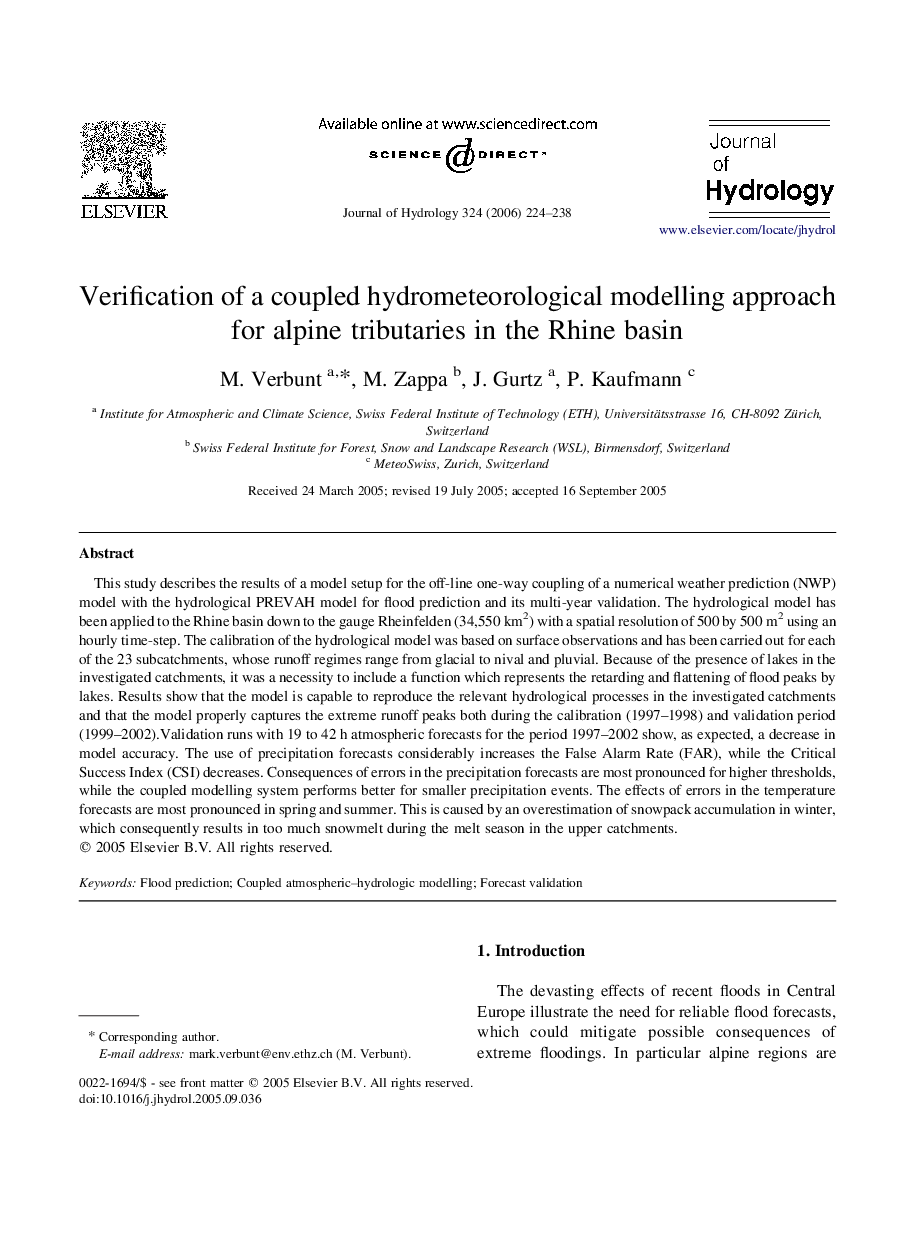| Article ID | Journal | Published Year | Pages | File Type |
|---|---|---|---|---|
| 4580394 | Journal of Hydrology | 2006 | 15 Pages |
This study describes the results of a model setup for the off-line one-way coupling of a numerical weather prediction (NWP) model with the hydrological PREVAH model for flood prediction and its multi-year validation. The hydrological model has been applied to the Rhine basin down to the gauge Rheinfelden (34,550 km2) with a spatial resolution of 500 by 500 m2 using an hourly time-step. The calibration of the hydrological model was based on surface observations and has been carried out for each of the 23 subcatchments, whose runoff regimes range from glacial to nival and pluvial. Because of the presence of lakes in the investigated catchments, it was a necessity to include a function which represents the retarding and flattening of flood peaks by lakes. Results show that the model is capable to reproduce the relevant hydrological processes in the investigated catchments and that the model properly captures the extreme runoff peaks both during the calibration (1997–1998) and validation period (1999–2002).Validation runs with 19 to 42 h atmospheric forecasts for the period 1997–2002 show, as expected, a decrease in model accuracy. The use of precipitation forecasts considerably increases the False Alarm Rate (FAR), while the Critical Success Index (CSI) decreases. Consequences of errors in the precipitation forecasts are most pronounced for higher thresholds, while the coupled modelling system performs better for smaller precipitation events. The effects of errors in the temperature forecasts are most pronounced in spring and summer. This is caused by an overestimation of snowpack accumulation in winter, which consequently results in too much snowmelt during the melt season in the upper catchments.
